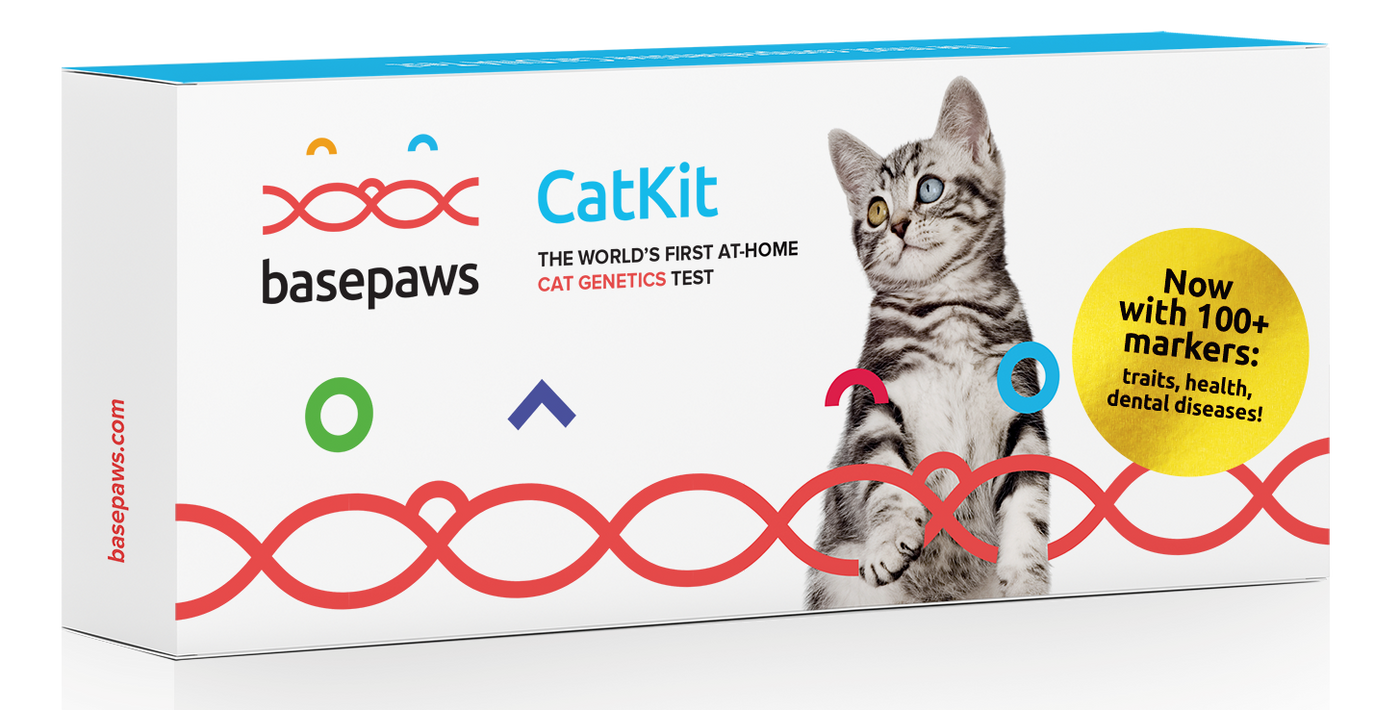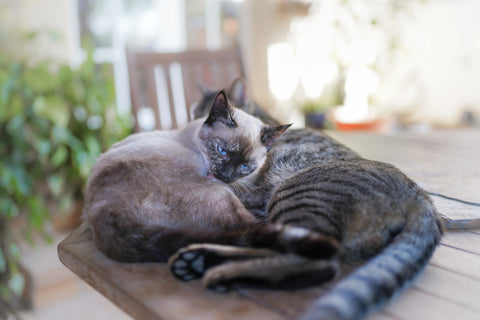
Launched in 2018, the Basepaws Cat DNA Test became the first-of-its-kind. It was created to give pet parents the customized information that they need to better understand their cats, implement at-home routines targeted to their cats’ needs, and more effectively work with their veterinarians to create an individualized proactive healthcare plan for their cats.
The Basepaws Cat DNA Test is now the most comprehensive feline breed and health screening tool on the market. Details of the test’s upgraded features are included in the sections that follow.
New Genetic Health Markers and Blood Type Screening
The upgraded digital report will provide results for over 43 genetic conditions represented by 64 health markers, including a new marker for hypertrophic cardiomyopathy (HCM), the most common form of heart disease in cats. While other companies test for the well known markers associated with HCM, Basepaws will be the very first to screen for an additional, recently discovered HCM-related marker. Another new feature includes genetic markers for blood type. There are three different feline blood types, and certain blood types can be more common in some breeds and less common in others. Knowledge of a cat’s blood type can be helpful to the cat breeding process as well as support life-saving medical decisions, such as when a cat needs an emergency blood transfusion.
A cat’s risk for each condition or their carrier status for a specific disease-associated marker will still be included in the health markers section of the report. Genetic health marker screening helps a pet parent identify their cat’s current and/or future risk for a disease and can support preventative care planning with a veterinarian. For example, the cause of HCM is not fully understood, but it is a condition that tends to be more prevalent in certain breeds versus others. Similar to other conditions such as chronic kidney disease, many cats with HCM do not display symptoms until the illness reaches an advanced stage. Early detection of a genetic predisposition for HCM can be useful to a veterinarian’s diagnosis and treatment process to potentially decrease the chances that a cat will experience certain symptoms and increase the range of options available to support their overall health and wellbeing.
New Genetic Trait Markers
The Basepaws Cat DNA test analyzes your cat’s genetic similarity to 21 different breeds in the Basepaws reference panel. With this update, pet parents will receive new results for 25 traits (including blood type and resistance to FIV) that are represented by 50 markers. These reveal some of the genes and mutations (alleles) that are responsible for observable traits (phenotypes) such as their cat's coat color, coat pattern and texture, tail length, and other features that contribute to their unique physical appearance. Review Basepaws’ full list of genetic conditions and traits.
The new digital report will include trait markers associated with monogenically-defined breeds, such as the Scottish Fold and the Japanese Bobtail. Monogenic traits are phenotypes that typically stem from a single gene mutation. When we look at the entire genome of a cat (which includes all genes and genetic instructions), these trait-related genetic variants (markers) only account for a tiny percentage of a cat’s overall genetic makeup and, therefore, do not constitute a meaningful contribution to a cat’s genetic similarity to different breeds. Nevertheless, they are responsible for some distinct and unique aesthetic features that are often associated with certain breeds.
Scientific Evidence Grading System
Basepaws will now offer a new five-star scientific evidence grading system for every health and trait marker. Pet parents will now be able to judge the strength of the published scientific research that links a particular marker to a specific disease or trait.
Some research findings are more robust and conclusive than others. For example, studies that include larger sample sizes (a higher number of cats) can conduct analyses of greater statistical power, meaning that the results of these analyses can be interpreted with greater confidence than those of studies with small sample sizes. In other words, we can be more confident in the conclusions and interpretations of a study with 200 cats that identify, through different scientific methods, a relationship between a genetic variant and a specific disease or trait of interest. These findings would be considered more robust and conclusive than those from a study of only one cat that reports a relationship between a genetic variant and a specific disease or trait of interest.
Our scientific evidence grading system is as follows:
Five stars: Consistent results reported across multiple scientific studies. More than 100 cats across studies that confirm the expected correlation between the genetic marker and physical presentation. Multiple scientific tools were used to confirm the mechanism behind the mutation. No discordant results were reported in literature.
Four stars: Results based on one or more studies that report findings from at least 30 cats that confirm the expected correlation between the genetic marker and physical presentation. Multiple scientific tools were used to confirm the mechanism behind the mutation. No discordant results were reported in literature.
Three stars: Results based on one or more studies reporting findings from at least 10 cats that confirm the expected correlation between the genetic marker and physical presentation. Multiple scientific tools may or may not have been used to confirm the mechanism behind the mutation. No discordant results were reported in literature.
Two stars: Results based on a study that only reports findings from fewer than 10 cats, yet it confirms the expected correlation between the genetic marker and physical presentation. Multiple scientific tools may or may not have been used to confirm the mechanism behind the mutation. Potentially inconclusive inheritance pattern. No discordant results were reported in literature.
One star: Preliminary results that should be interpreted with extreme caution. Based on a scientific study that either focused on a single cat, or on a few studies that report contradictory results.
Dental Health Screening and Resources
The upgraded digital report will still contain results from the Basepaws Cat Oral Health Test that pet parents can share with their veterinarian to plan their cat’s short- and long-term dental care. The dental test screens for periodontal disease, tooth resorption, and bad breath—the most common conditions that are known to impact a cat’s oral health. Pet parents will continue to receive actionable insights for improving at-home dental health care, as well as tips related to nutrition and overall health.
The Science Behind It All
Unlike most D2C genetic pet health companies that use DNA microarray technology, Basepaws employs next generation amplicon sequencing (NGS). This method affords Basepaws the speed and agility needed to revise its health and traits marker panel with newly discovered markers on a periodic basis. This stands in contrast to companies that use DNA microarrays, since updating a microarray chip is a very slow and costly endeavor. Basepaws published a white paper on the methodology behind its Feline Breed Analysis to showcase some of the science behind the Basepaws Breed + Health Cat DNA test.
Know Your Cat Even Better with These Exciting New Features!
The Basepaws digital report is a “living” document that shares your cat’s breed and health information with greater accuracy over time. Every purchase of a Basepaws Breed + Health Cat DNA test after November 15, 2021 will include the new features outlined in this post. Existing customers can purchase an upgraded digital report version for a small fee (the upgrade is free for existing Basepaws Whole Genome Test customers). In time, we will also release upgrades related to markers that are discovered through Basepaws’ internal research program.
We’re thrilled to offer these new features and to continue to support your journey of getting to know your cat better—inside and out!
Shop DNA Tests


